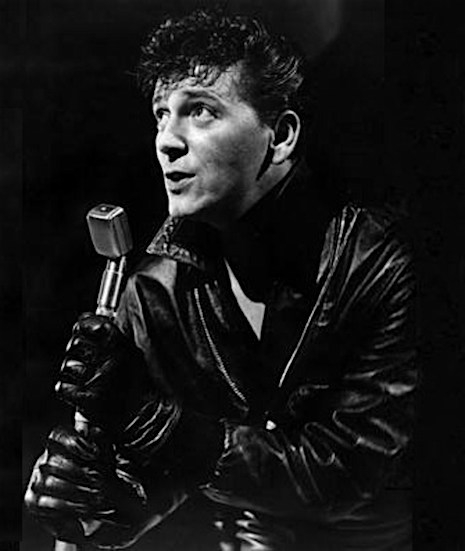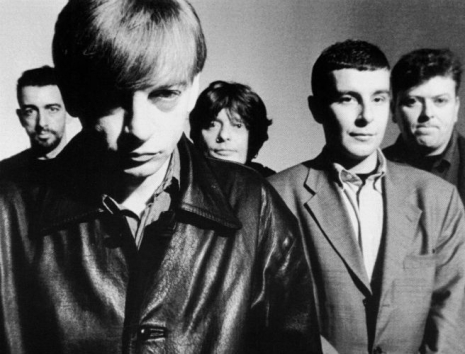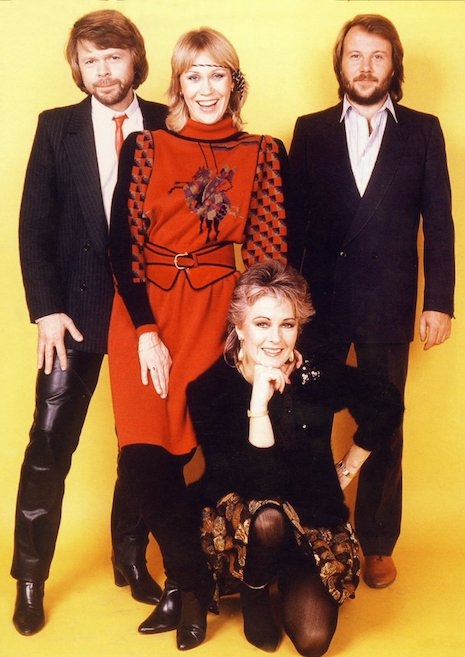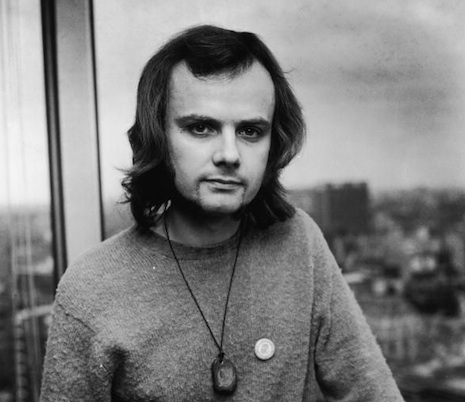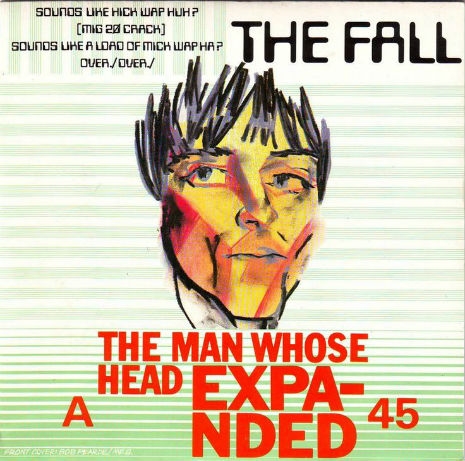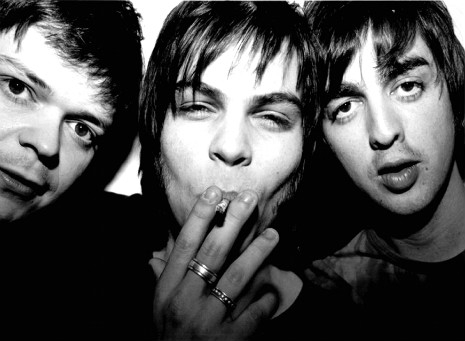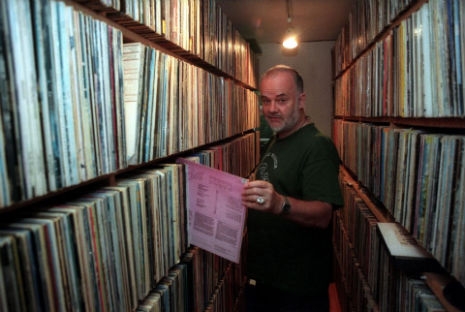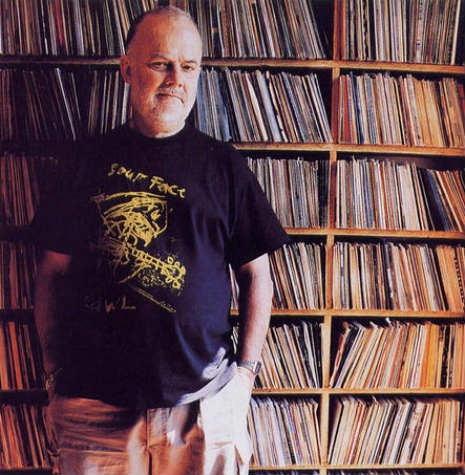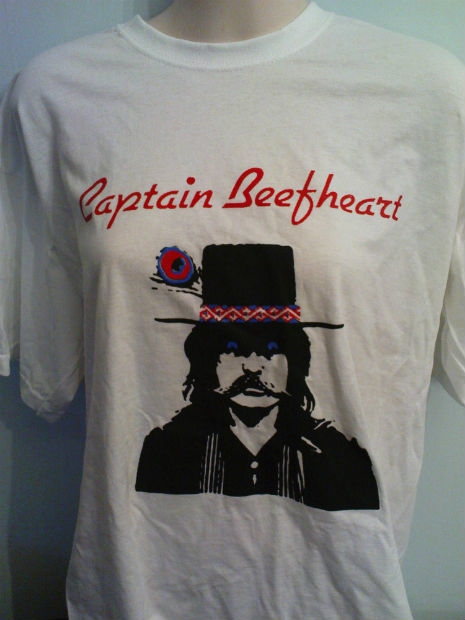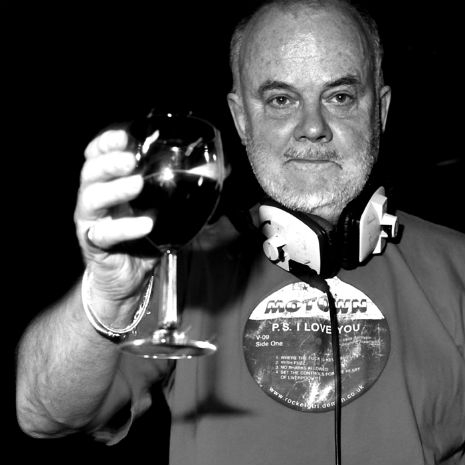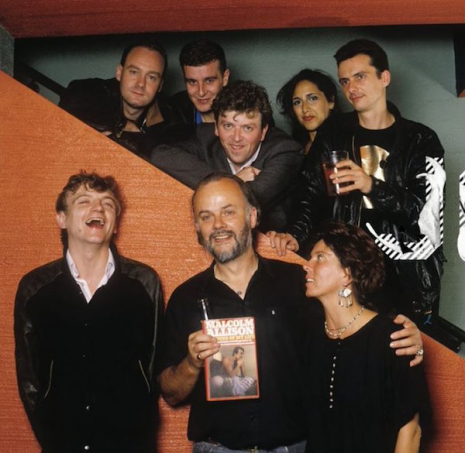
John Peel with his wife Shelia and Mark E. Smith and the Fall at Peel’s 50th birthday bash, 1989. via.
When did everything get so shit? The older I get the more I think Philip Larkin was probably right when he wrote every new generation is just a mere dilution of the last. My gauge is pop culture and pop culture just now is shit, utter shit. Music is at a nadir. And don’t tell me, “Oh, but there’s suuuuuupppppeeerrr new bands out there…” No. There are mainly shit new bands out there who think they’re super.
Like take this morning when some vacuous TV presenter was interviewing a boy band pop star who was being feted like he could walk on water and turn it into wine. The singer (if that’s what he was) had a vocal style like cats being drowned and looked like he’d escaped some bide-a-wee home for the criminally attired. This anodyne safe space presenter was all “super,” “lovely,” “great” and “you’re the best.” Had she ever listened to this no-talents back catalogue? If she had—-God help us!!! I would rather go deaf than listen to that kinda shit. Seriously.
Anyway, this insufferable presenter was the kind who would interview a serial killer with: “And you know I was really a bit scared when I heard about my next guest, but you know what, he’s really super, amazing, just lovely. Now, Sid, you strangle people, don’t you? That’s amazing. And it’s all your own handiwork? Super.”
This is where we are at folks. Maybe coronavirus ain’t so bad after all…
Now kids (in my best Grandpa Simpson voice…), once upon a time, young ‘uns could wake up in the morning and there was such an abundance of great music to pluck like ripe fruits from the tree that we never got out of bed. No, sir. We just lay there, smoking weed and listening to PiL, T.Rex, Bowie, the Specials, Joni Mitchell, Blondie, Radiohead, Throbbing Gristle, Public Enemy, NWA, Kate Bush, Nick Cave, Iggy Pop, the Slits, etc, etc, etc…. Of course, it wasn’t all good. There was NSYNC, the Backstreet Boys, Boyz II Men, the Spice Girls, and New Kids on the Block….so maybe things haven’t changed that much…hmmm?
But then again….Let’s go back to your childhood, childhood… says Vivian Stanshall.
It’s 1989. The legendary Radio One DJ is being given a surprise party to celebrate his 50th birthday and 25-years in broadcasting. The party took place on Peel’s birthday eve Tuesday August 29th, and featured a few of his (then) favorite bands: House of Love, the Wedding Present, and the Fall.
Originally Peel’s other favorite band the Undertones were to reform with Feargal Sharkey on vocals but “sadly had to pull out due to one of the members having a family bereavement.” Thankfully, the House of Love stepped in. If the support bands were good, the headliners the Fall were grrrreat.
John Peel, for those who don’t know, was one of the most important British DJs operating out of the BBC from the 1960s until his untimely death in 2004. Peel curated, introduced, and promoted some of the best new bands during these years like T.Rex, Pink Floyd, Roxy Music, the Faces, Joy Division, the Clash, the Sex Pistols to the Fall, the Smiths, Pulp, Nirvana and the White Stripes and many many more like the A. C. Acoustics, Dept. S. and the Undertones. His influence as a curator of good musical taste has never been equalled.
Now back to the surprise birthday party. The Fall played a selection of past tracks and more recent recordings, together with a cover of the Gene Vincent song “Race with the Devil” as it was one of Peel’s favorite songs.
Track Listing: “Mere Pseud Mag Ed, “I’m Frank,” “Arms Control Poseur,” “Fiery Jack,” “Race with the Devil,” “Carry Bag Man,” and “Mr.Pharmacist.”
John Peel joins the band on stage while the crowd sing “Happy Birthday.” Peel addresses the audience and made his famous quip about his fantasy soccer career:
Think my chances of making the Liverpool side are gone now. Might still be able to get a game at one of those London clubs, though.
You can listen to the whole party here but meantime, here’s the meat and two veg: The Fall.
Previously on Dangerous Minds:
‘Go to the pub, wait for people to get on your nerves’: The Mark E. Smith ‘Guide to Writing’ Guide
What Mark E. Smith liked: Lou Reed, Sex Pistols, Frank Zappa, Philip K. Dick & Kurt Vonnegut, a list
‘The Wonderful and Frightening World of Mark E. Smith’
John Peel asks original punks the Mekons, the Slits & others about ‘punk, publicity and profit’
Perverted by Language: John Peel introduces The Fall… over and over and over and over again






